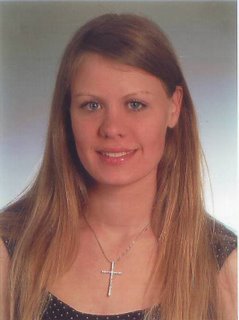Introduction to Linguistics, Session 5, Thursday, 2006-11-16
Introduction to Linguistics, Session 5, Thursday, 2006-11-16
WORDS AND THEIR PARTS
Guest Lecturer: Thorsten Trippel
What is a word?
When we define the word "word" we have to differentiate between a definition of its internal and its external structure.
Internal structure of words:
In written language, a word is a string of letters separated by a space.
In spoken language, a word is a string of speech sounds, separated by a tiny pause (or a gliding process). It consists therefore of a string of phonemes that can be defined as the smallest word- distinguishing units within a word/ syllable (compare f.ex. the "power" of phonemes by comparing a minimal pair).
A word consists of one or more morphemes which carry meaning (Morphemes are the smallest units within words that carry and differentiate in meaning).
*Detour: What is MORPHOLOGY?
Morphology is the study of the formation of words. Morphemes carry the smallest units of a language that carry meaning. A word can be comprised of one or more morphemes.
Example of the use of morphemes:
try: one morpheme: neutral present tense form
tried: the supplementary morpheme –ed indicated the past tense (simple past)
trying: the supplementary morpheme –ing indicated that the "action" is happening right now
External structure of words:
A word consists at least of one or more morphemes that can stand alone.
From a syntagmatic point of view (external structure), a word is the smallest unit of a sentence (sentence syntax).
Exercises on MORPHOLOGY:
Identify the meaningful units of the following words:
Identify: .......identi-f-y .....→ present/ neutral form: infinitive
The:............. the .................→ sense depends on what follows: definite article
...................................................singular or plural, the difference in
..................................................pronunciation /e/ vs. /i/ indicates whether the
..................................................determinant is followed by a consonant or a
..................................................vowel
Meaningful: mean- ing- ful → consists of three morphemes: a stem and 2 affixes
Units: .........unit-s................ →.plural "s"
Of: ..............of .......................→ is a function word/ a free morpheme
Following: ..follow-ing ........→ indicates the progressive
Words: .......word- s............ → plural "s"
Maybe: ......may- be ...........→ a compound of two morphemes
Some: ........some .................→ "some" and "more" are function words that
More: ........more..................→ generally can adhere another free morpheme
Complicated: complicat- ed → passive, adjective affix
Using:...... use- ing ..............→ progressive
Witchcraft: witch- craft..... → compound
To: ...........to ........................→ function word/ free morpheme
Find: ........find ....................→ infinite verb form
Terms: .....term-s ..............→ plural "s"
There are two different kinds/ types of words within a language:
-Simple Words
-Complex Words: -Derived Words
-------------------Compound Words
Simple Words
Simple words are very short and only consist of one morpheme.
Examples of simple words: boy, radio, book, paper, magnet, house, compute
Complex Words
Complex words are relatively long words and can be derived or compounds. They contain at least more than one morpheme:
Examples of complex words: computer, boys, radio-recorder, bookshelf, magnetize, acidfree
We already mentioned a difference in morphology:
There are free morphemes that occur as single simple words that carry meaning:
For example, simple words lik:e boy, man, radio, etc
But there are also bound morphemes that can only occur in connection with other morphemes (lexical stems).
Bound morphemes can be prefixes, infixes, suffixes or even circumfixes in certain languages.
Examples of bound morphemes: -s, -ion., un-, -ize
Allomorphs are a specific variant form of a morpheme! The phonetic realisation of morphemes depends on its phonetic environment, because morphemes are often also phonemes and are therefore influenced by other phonemes that precede or succeed the phoneme in question.
Examples:
-difference between the free morphemes "a" and "an" when followed by a vowel
- rules on the English plural "s": realisation: /s/ when precede by a voiceless
sound, realisation: /z/ when precede by a voiced sound or a vowel, realisation:
/Iz/ when preceded by a /z/.
The structure of words
Complex words consist of several parts:
-A root that carries the meaning
-A bound morpheme or affix that can be realised as a prefix (an affix that is attached before the root) or a suffix (that is attached after the root)
Example: the word "unbelievable" has a prefix "un" and an suffix "able". The lexical word "believe" is the base, the form to which an affix is attached.
A word is a base that can contain one or more affixes.
-----------------------Root → Word
-----------------------------------↓
---------------------------------Affix
------.......-.-----↓ -----------↓ ---------↓ ------↓
--.......---.........--prefix --circumfix-- infix --suffix
The longest word in English has several affixes:
ANTI-DIS-ESTABLIH-MENT-ARIAN-ISM
These affixes are built up before and behind the base "establish".
Summary:
Every word contains a base.
A morpheme that is also a word is called a free morpheme.
A morpheme that needs a root to make up a word is called a bound morpheme.
An affix in front of a base is called a prefix, behind it is called a suffix.
Both, simple words and complex words can be the base for a more complex word.
Every root is a base, but not every base is a root!
COMPOUNDS: at least two words
-NOUNS can combine with:
other nouns (f.ex.: fire engine)
adjectives (f.ex.: greenhouse)
verbs (f.ex.: swimming suit)
prepositions (afterthought)
-VERBS combine with:
other verbs (breakdance)
adjectives (dry clean)
prepositions (underestimate)
-ADJECTIVES combine with:
prepositions (ingrown)
adjectives (red hot)
The bolt printed word categories constitute the HEAD of the compound, it is the SECOND part of the compound and defines the WORD CLASS.
The MODIFIER (the other word classes with whom the head is compounded) specifies the compound!
COMPOUNDS with a HEAD that is a:
-NOUN: wallpaper, timetable, patchwork, etc.
-VERB: upload, over flown, offset, etc.
-ADJECTIVES: snow white, headstrong, stiff necked, etc.
COMPOUNDS with a MODIFIER that is a:
-NOUN: wallpaper, timetable, thunderstorm, etc.
-VERB: set-up, settlement, computing centre, etc.
-ADJECTIVES: blackboard, small talk, greenhorn, etc.
-PREPOSITION: understatement, upload, underwear, etc.


0 Comments:
Post a Comment
<< Home